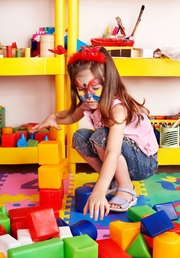How to Speak Your Child’s Love Language: Tips and Techniques
Ever wondered how to connect with your kiddo on an emotional level? Try speaking their love language! Dr. Gary Chapman came up with this cool idea that everyone, including kids, has a unique way they give and receive love: words of affirmation, acts of service, receiving gifts, quality time, or physical touch.
Getting the hang of your child’s main love language can really boost your bond and help them feel emotionally secure. It’s not a one-size-fits-all thing; it’s more about finding out what makes your little one feel most loved and valued. When you figure this out, you’re on the way to helping them grow up with a healthy sense of self-worth and emotional well-being.
Imagine this: setting aside special time for activities they love, showering them with praise when they do something great, or surprising them with little gifts that show you care. Sounds good, right? With some handy tips and tricks, you’ll be all set to speak your child’s love language fluently, creating a warm and supportive family vibe. Let’s dive in and make those connections stronger than ever!
Understanding Love Languages
Love Languages provide a framework for understanding how individuals express and receive love. They are especially helpful for communicating affection and support effectively with your child.
The Five Love Languages Explained
Each person has a unique way of feeling loved. Dr. Gary Chapman identified five primary love languages: Words of Affirmation, Acts of Service, Receiving Gifts, Quality Time, and Physical Touch.
- Words of Affirmation involve expressing love through spoken affection, praise, or appreciation.
- Acts of Service mean doing something for the child that they would like, like helping with homework.
- Receiving Gifts is self-explanatory; it’s giving tokens of affection your child treasures.
- Quality Time entails giving your child undivided attention and participating in activities together.
- Physical Touch includes hugs, pats on the back, and gentle touches as a way to convey love and care.
When you understand your child’s love language, you can connect with your child in a way that resonates with them.
Identifying Your Child’s Love Language
To find out your child’s love language, observe how they express affection to you and others. Do they often give compliments (Words of Affirmation)? Or do they prefer hugs (Physical Touch)? You can also notice what they request most often or respond to positively. Listening and paying attention to your child’s verbal and nonverbal cues are vital in identifying their love language.
The Importance of Love Languages in Development
Recognizing and speaking your child’s love language can profoundly impact their emotional and psychological development. When you communicate in their primary love language, your child feels understood and valued. This validation builds their self-esteem and can improve their relationships with others. By using your child’s love language, you lay a foundation for their emotional well-being.
Learning more about how these love languages function in family dynamics can offer additional insight into nurturing your child’s development.
Communicating Effectively with Your Child
Successfully engaging with your child hinges on understanding their unique love language and crafting communication strategies that resonate with them.
Adapting to Your Child’s Love Language
Identify your child’s primary love language and choose activities together that speak to that language.
Practical Activities for Each Love Language
Words of Affirmation: Write notes of appreciation or encouragement and place them in your child’s lunchbox or backpack. Verbal praise for specific actions goes a long way.
Quality Time: Schedule one-on-one time with your child regularly. Whether it’s a weekly walk or a monthly adventure, make these moments count without distractions.
Receiving Gifts: This doesn’t have to be expensive. Small tokens that show you’ve been thinking of them, like their favorite snack or a handmade item, can convey a lot of love.
Acts of Service: Helping with a difficult task or teaching them something new demonstrates care and support. Make it interactive by working on a project together.
Physical Touch: A hug, high five, or a gentle touch on the shoulder can be very reassuring. Recognize the moments where a simple touch can be more powerful than words.
By integrating these actions, you affirm their feelings and strengthen your bond.
Overcoming Communication Barriers
Listen actively and observe body language to detect and address any barriers:
- Ask open-ended questions to encourage your child to express themselves freely.
- Maintain eye contact to show your interest and presence.
- Avoid distractions by putting away electronic devices during conversations.
- Acknowledge their feelings without judgment to show empathy and understanding.
When you create a space where your child feels heard, they are more likely to open up.
Fostering an Environment for Open Dialogue
Cultivating an atmosphere where your child can speak candidly is pivotal:
- Be approachable: Let your child know they can talk to you at any time.
- Set a routine: Establish regular times for discussions, such as during meals or at bedtime.
- Share your own feelings: This encourages them to reciprocate and normalize emotional expression.
Open dialogue contributes to a trusting relationship, encouraging your child to share both triumphs and troubles.
Implementing Love Language Strategies
Connecting with your child through their love language strengthens your bond. Here’s how you can put these strategies into practice.
Creating a Love Language Routine
Set aside specific times to express your child’s love language. For example:
- Start or end each day with a positive affirmation directed at your child.
- Dedicate every Sunday afternoon to an activity of their choice.
- Give a small weekly surprise that shows thoughtfulness.
- Offer help with their weekend homework.
- Ensure goodnight routines involve a comforting cuddle or appropriate touch.
Incorporating Love Languages into Daily Life
Incorporate these gestures naturally into everyday interactions:
- Morning Routine: A warm hug (Physical Touch) or a note in their breakfast area (Words of Affirmation) can set a positive tone for the day.
- After School: Spend time talking about their day (Quality Time), help organize their study space (Acts of Service), or surprise them with their favorite after-school snack (Receiving Gifts).
- Bedtime: A story read together (Quality Time), helping them lay out clothes for the next day (Acts of Service), or a goodnight kiss (Physical Touch) reflects love and care.
Expanding Beyond the Basics
Understanding your child’s love language is a journey that adapts with time. As your child grows, their ability to express love and their understanding of receiving it will evolve. Here’s how you can support their emotional growth every step of the way.
Teaching Your Child to Express Love
Encouraging children to articulate their affection teaches empathy and emotional intelligence. For a child whose love language is Words of Affirmation, model saying “I love you” and giving compliments, and for Acts of Service, involve them in simple tasks like making a card for a family member. Children mimic your actions, so lead by example.
Navigating Love Languages as They Grow
As children mature, their understanding and needs change. Stay in tune with these changes. Teens might prefer quality time through deep conversations instead of play. A high-five might transform into a supportive arm around the shoulder. Keep communication open to adapt to their evolving needs.
Influences Outside the Home
Children are influenced by their interactions at school and with friends. It’s crucial to recognize how these outside experiences can shape their expression of love. For instance, if friends value gift-giving, your child may start attaching more importance to Gifts as a love language. Engage with them about their friendships to understand these external influences and how you can support their love language at home.
Conclusion
So there you have it! Understanding and speaking your child’s love language isn’t just a nifty concept—it’s a game-changer. By tuning into how they express and receive love, you can create deeper connections and help them feel truly valued.
Whether it’s through words, time, gifts, touch, or service, adapting your approach to what resonates with them can make all the difference. Remember, it’s about those little everyday moments that show you care.
So go on, discover your child’s love language, and watch your bond grow stronger than ever. Happy connecting!




 Author bio: Cora Gold is the Editor-in-Chief of women’s lifestyle magazine,
Author bio: Cora Gold is the Editor-in-Chief of women’s lifestyle magazine, 


